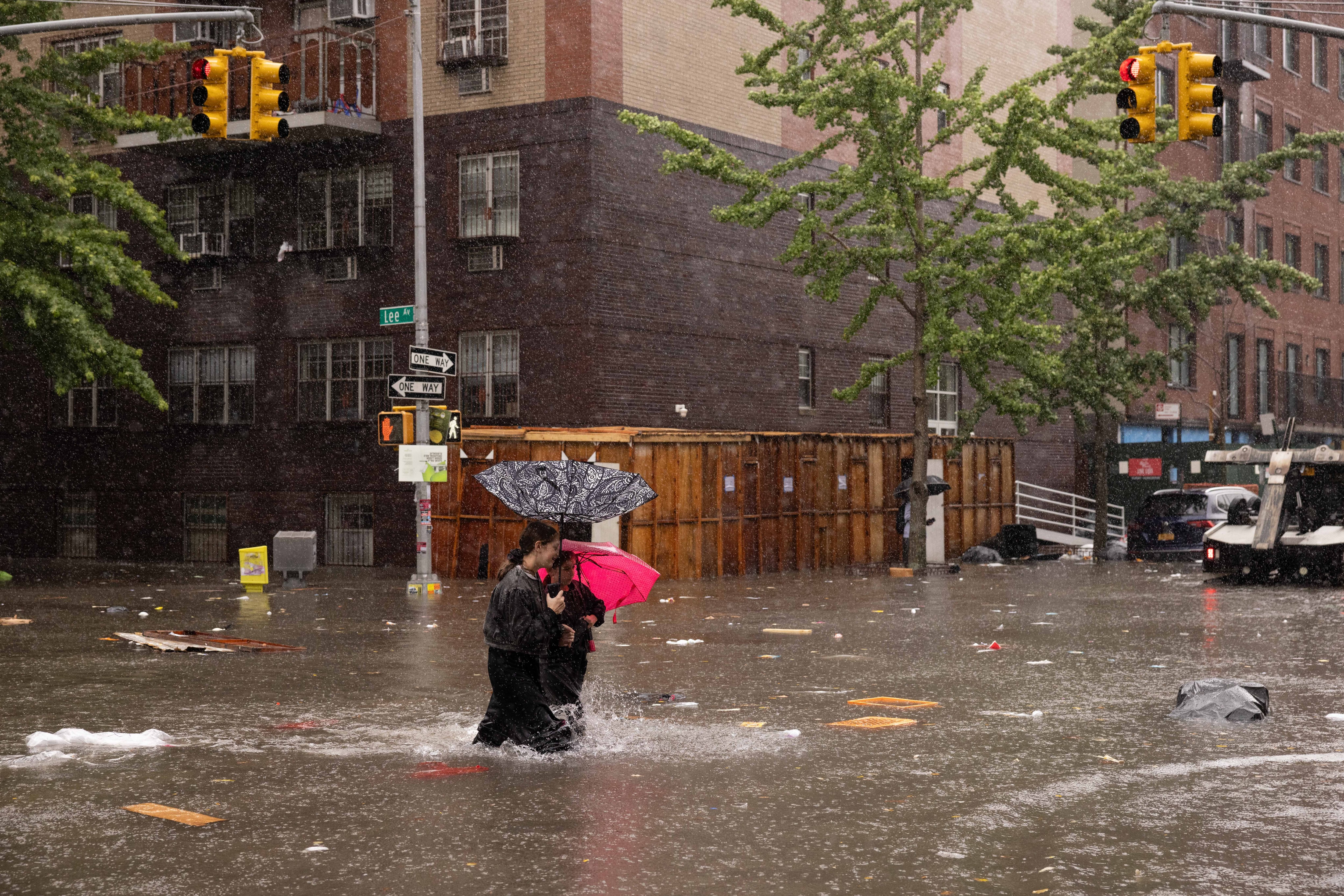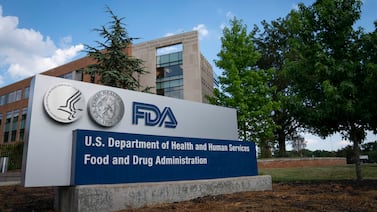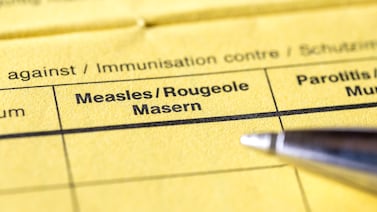Public health, explained: Sign up to receive Healthbeat’s free New York City newsletter here.
New York City could face a wide range of public health calamities in the coming years. There could be an infectious disease outbreak or another pandemic. It’s possible the city could see a mass casualty incident or accidentally released hazardous materials. But it’s flooding that the New York City Department of Health and Mental Hygiene is most concerned about.
A new report, a five-year risk assessment required by the Centers for Disease Control and Prevention, presents flooding as the city’s most pressing public health threat. That’s a result of rising sea levels and intensifying storms, which threaten the city’s coastlines and low-lying neighborhoods.
The last time the report was released, in 2018, using a different methodology, the Health Department identified a respiratory virus with pandemic potential as the city’s most severe threat, and excessive heat as the most likely threat. The new report warns that another pandemic remains the most severe and highest risk public health threat, but flooding — a category distinct from coastal surges — is the most probable one.
Flooding has become an increasing concern in New York City in recent years. In the fall of 2021, heavy rainfall and floodwaters from Hurricane Ida killed 13 residents, including 11 who drowned in basement homes. In 2023, flash floods generated chaos across the city, leading to multiple rescue operations for people stuck in cars and in flooded apartments.
“Nationally, we’re vulnerable to more frequent and intense floods because of atmospheric warming,” said Dr. Victoria Lynch, a postdoctoral research fellow in the Department of Environmental Health Sciences at Columbia University Mailman School of Public Health.
Warmer air temperatures lead to more water vapor in the atmosphere, which can quickly condense and unleash very intense rainfalls, Lynch said. And New York City, like other coastal regions in the United States, is also vulnerable to sea level rise.
Tidal flooding in the 2020s in New York City will likely affect Brooklyn Bridge Park, the Coney Island boardwalk, and other coastal strips of the city, according to the report, which draws on projections from the National Oceanic and Atmospheric Administration. By the 2080s, the flood risk will worsen, making low-lying areas like the Rockaways and LaGuardia Airport vulnerable to frequent high tide flooding. If a coastal storm hit in the 2080s, the flooding impact on the city would be significant, inundating much of southeast Brooklyn, large parts of downtown Manhattan, and areas of Staten Island, Queens, and the Bronx.
Flooding poses a significant risk to human life. A study published earlier this year in Nature Medicine, led by Lynch and other Columbia University researchers, explored the full scope of flood-related mortality in the United States from 2001 to 2018. Researchers found that floods were associated with higher death rates for most causes of death — in some cases for months after the flood event.
Severe rain-related floods were associated with increased death rates for cardiovascular disease and infectious diseases during the month of a flood. In the month following a flood, researchers noted increases in injury-related and infectious disease-related death rates. Two months after a severe flood, researchers found an increase in respiratory disease death rates. For tropical cyclones, researchers found a pronounced increase in injury death rates during the month of a severe flood, and an increase in injury and infectious disease death rates in the following month.
“They’re these massive shocks to the system that can affect you as an individual, but then also your family and your community,” Lynch said of floods. “In every way that a person’s health and livelihood can be affected, it is when you have these really devastating flood events.”
In its report, the Health Department also identified parts of the city that would particularly struggle to recover from a major coastal storm. That determination was based on geographic vulnerability to flooding, as well as on the ability of a local community to avoid harm, maintain access to basic services, and return to previous levels of access to employment, housing, food, and health care. The neighborhoods least prepared to bounce back from a significant coastal storm include Sheepshead Bay, Rockaway Beach, East Harlem, Soundview, and Throgs Neck, according to the report.
To mitigate the risks of flooding, the report recommends using backwater valves to prevent sewer backups, creating rain gardens to absorb stormwater and reduce runoff, and promoting green space stewardship for stormwater management.
Eliza Fawcett is a reporter covering public health in New York City for Healthbeat. Contact Eliza at efawcett@healthbeat.org .







